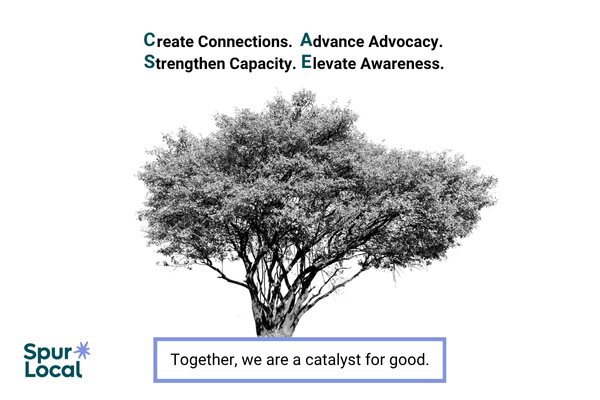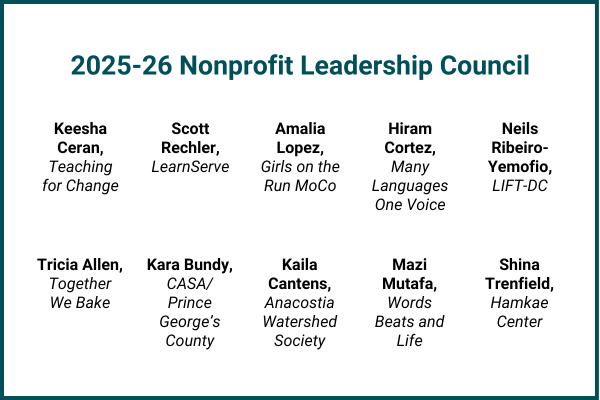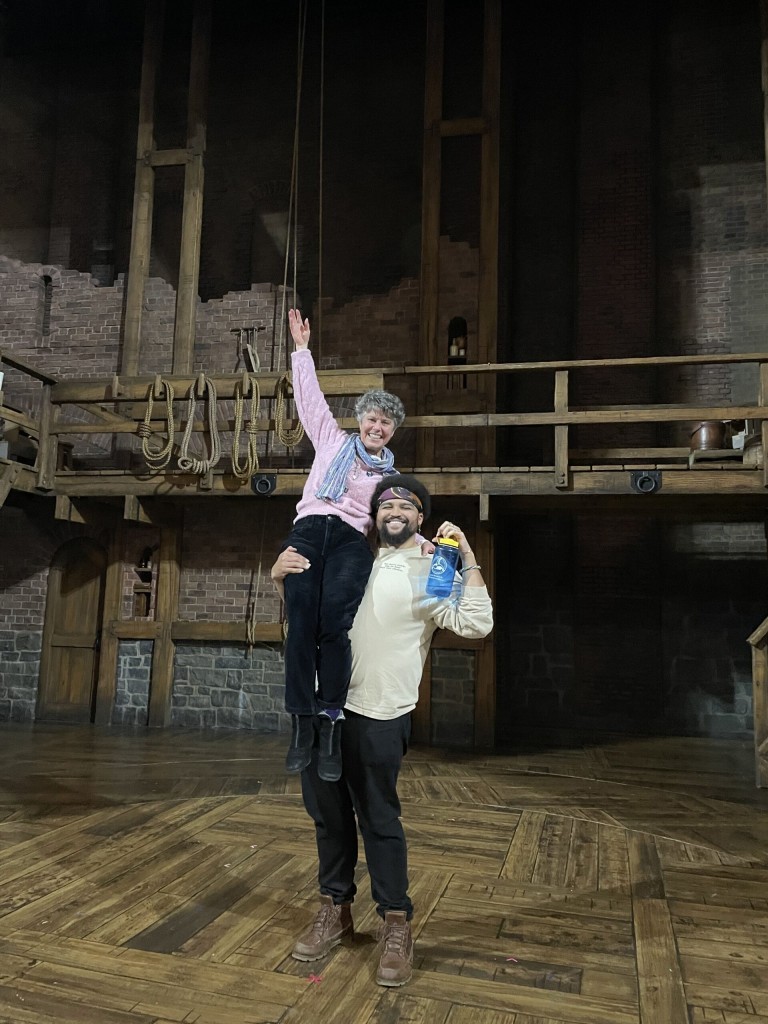GivingTuesday 2025
This GivingTuesday, many nonprofits are facing uncertainty, especially here in the Greater Washington region. Federal changes are significantly impacting the DMV region, with findings from Brookings’ DMV Monitor showing that our unemployment rate is increasing at a faster pace and that more households are showing signs of financial distress.
Local nonprofits are our social safety net and a sign of regional resilience. Many have lost funding, even as demand for their services increases. This year, two in three of the nonprofit Executive Directors surveyed by Spur Local are experiencing burnout.
Every day in the DMV, thousands of nonprofit workers provide free and low-cost art classes, after-school programs, and legal services. They steward native ecosystems around the region, combat social isolation among our seniors, and feed neighbors. Today, we hear from four of the 200+ community-based organizations participating in Give Local Together, our region’s official GivingTuesday campaign, about how they are working with and for local communities and what your support this giving season means to them.
Local Nonprofits
Anjela Barnes is the Executive Director of the Accokeek Foundation, a nonprofit that stewards Piscataway Park to protect its cultural and natural resources and inspire ecological stewardship. She says, “Each year, thousands of students learn directly from the land, forming connections with the river, walking forest and meadow trails, and engaging in experiences shaped by Indigenous knowledge and community wisdom.” They have restored sensitive ecosystems, removed invasive species, and reduced erosion to protect the Potomac River and the cultural landscapes that hold generations of memory.
Lori Pitts is the Artistic Director of Ally Theatre Company, which harnesses the power of theatre and lived experience to drive meaningful criminal justice reform. She says, “We’re at the intersection of theater and advocacy, and we work alongside people who are currently and formerly incarcerated to shift narratives, imagine alternatives, build community power, and influence change.”
Hiram Cortez is the Executive Director of Many Languages One Voice, a nonprofit that fosters leadership and provides tools for greater civic participation of immigrants in DC who do not speak English as their primary language in solutions that impact their lives. They have grown their programs for youth, helping more young people define and move towards their life, school, and career goals. They also train community members on digital literacy skills and launched a new program this year to help immigrants leverage the education and work experience they have here in the United States.
Keesha Ceran is the Deputy Director of Teaching for Change, which provides teachers and parents with the tools to create schools where students learn to read, write, and change the world. “We do place-based work for the DC metro area with educators, particularly around anti-racist education and social justice practices in the classroom,” she says.
What They’re Experiencing This Year
“This year is underscored by the growing need for authentic cultural learning, meaningful outdoor engagement, and spaces where young people can step into stewardship and leadership,” Anjela elaborates.
“In DC, in particular, we saw these tough-on-crime responses resurge and expand. We saw how, when people feel fear, they want control, and the default is always incarceration, punishment, and putting people away. We have found that the people we serve need our work even more this year, and we need more spaces for healing, connection, and to have voices heard,” says Lori.
“What we’re witnessing here in the DC metro area, in particular, has definitely reminded us of how important community engagement really is and how we center the voices of educators who, right now, are feeling criminalized in many places across the country,” Keesha notes.
“Funding is much more difficult to obtain, both on the government side and the foundation side,” Hiram explains. “For our youth, every year that passes is going to be extremely important for them. What a young person does in 10th, 11th, 12th grade, whether they’re on track, is going to have a big impact on their life trajectory. So we can’t afford to not be there for them and not provide the programs that we do… The support from individuals in our community has become even more important for us to continue the work.”
What Brings Them Hope
One of Ally Theatre Company’s community advocates and board members, Antoine Coleman, emphasizes the power of the arts. “I went to prison at a young age. I served over 20 years in prison. I was originally sentenced to life and was released under the Incarceration Reduction Act in DC. My first job was as a resident artist for poetry,” he shared. “I was able to host my own poetry shows and invited formerly incarcerated members of our community. For a lot of people, that’s the only way they can get their story out and change perceptions… To be able to provide those platforms for our youth and community is very important.”
“Despite what we are witnessing right now, it’s been hopeful – recognizing that we do take care of us, and continuing to center that in the work we do, not just for today but what the future will bring as well,” Keesha emphasizes. “For all of us, whether we are in the classroom, whether we have young kids in the classroom or not, our responsibility as community members is to support education as a public good.”
“We really think about the next seven generations because the decisions that we make today, that impact the land, the environment, our education, really change the future,” Anjela shares. “We’ve done the hard work and laid the foundation for transforming our communities through our work… People reach out, and they say, How can I help?” Hiram echoes this sentiment. “We have seen that the broader DC community cares a lot about immigrant families… That makes me feel really hopeful. Our work will continue in one way or another.”
As Antoine encapsulates, “so as long as our power is in what we can create, you always have to be optimistic.”
This GivingTuesday, direct your resources locally by visiting GiveLocalTogether.org, exploring the work of these nonprofits and over 200 community-based organizations, and giving to the causes you care about.





